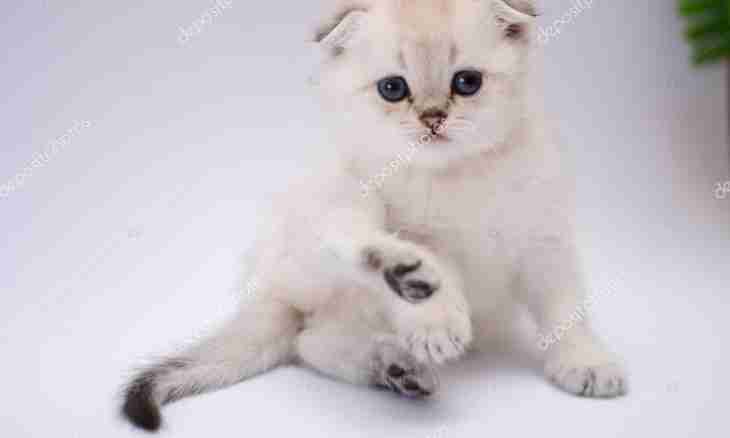Pretty muzzle and powerful pads. This the first that is evident and remembered at the sight of kittens of the Scottish breed.
The Scottish Fold appeared rather recently and yet not worldwide she is recognized. But this breed already won hearts of many people. These plush kittens with a lovely muzzle and the pressed ears win the hearts once and for all.
They have physiological features
- It is developed in proportion and has smooth lines.
- Most often average length with strong muscles. The building of a foot wide thanks to what they can long stand or sit on them as the person.
- Long and with the made narrower end. Without breaks and a hook.
- Round with plush cheeks. The muzzle not of the priplusnut is also not extended. Even in an adult look they have a children's look.
- Big and round. Color varies depending on a wool color.
- Small and triangular shape. Are pressed to the head if a Scottish Fold or straight lines if skottish-stright.
Formally kittens of breed are divided into 2 types. There is no clear split on subspecies at present. Most often they are divided on ears and length of wool.
By the form ears:
- ""Scottish Fold"". Fold in translation from English is meant by "a fold, a bend" that actually and displays in the name of breed its main feature — a fold on ears.
- ""Skottish-stright"." As Separate breed are not recognized and do not participate in exhibitions, however completely get under the specified standards. Difference one — ears at them do not hang, and stand, as at ordinary cats.
For healthy posterity the manufacturers cross two of these subspecies. In other a case there can be genetic diseases.
On wool distinguish from Scots:
- Short-haired Scottish Fold. Wool — the classical plush formed at the expense of identical are long a dense awn and a dense underfur.
- Long-haired Scottish Fold. Subspecies still call Highland-fold. The wool extended, silky, with a soft dense underfur. Some manufacturers try to remove long-haired subspecies as a separate line, but in general, as well as in a case with a shape of ears, the corresponding gene can be shown in any kitten.
Will be to foresee what posterity at your cat or a cat rather difficult. Everything depends on how genes will prove. Also kittens with the lowered ears and with usual can turn out.
Description of breed
Shotladnsky and British breeds are very similar as externally, and on signs of breed. But it is worth reminding that shotlanda appeared only 50 years ago.
- From 3 kg to 6 kg. There are also larger cats up to 8-9 kg.
- Growth in withers on average 28-32 cm. Proportional constitution.
- The WCF standard (World federation of cats) allows any color. Requirements of CFA (Association of fans of cats) are slightly tougher, exclude several popular flowers: lilac, chocolate and kolorpoynt.
- Life expectancy. On average Scots live about 15 years. If to watch carefully over health of the pet and it has no hereditary diseases, then there live Scottish Folds and up to 20 years
- Kittens of this breed differ in exclusive friendliness and quiet character. Adult pets are most often phlegmatic and just will prefer to lie on a sofa. They are rather lazy, but like to sit on hands. Little kittens are very active and like to play, especially with your legs.
- Scots are rather clever, easily adapt to the rules adopted in the house and the schedule, quickly master a tray and a claw sharpener. But it is worth watching at first carefully where to you the favourite goes to a toilet. Sometimes the place is difficult to find kittens.
- Sizes of an adult Scottish Fold averages. Cats — large, with a thickset trunk, a broad chest, shoulders and a basin. Cats — tiny, with the narrow frame making an animal graceful and graceful. Character at Scots soft and tender. They are bright, but are not inclined to training and profound training. These cats are able to use cunning and manipulate the owner.
In general the Scottish kittens are friendly. In them there is no natural aggression and rage. Several minutes a day are enough to pay it attention at least. To play with it, to talk and is not angry with it. Then they will answer you with love and attachment

